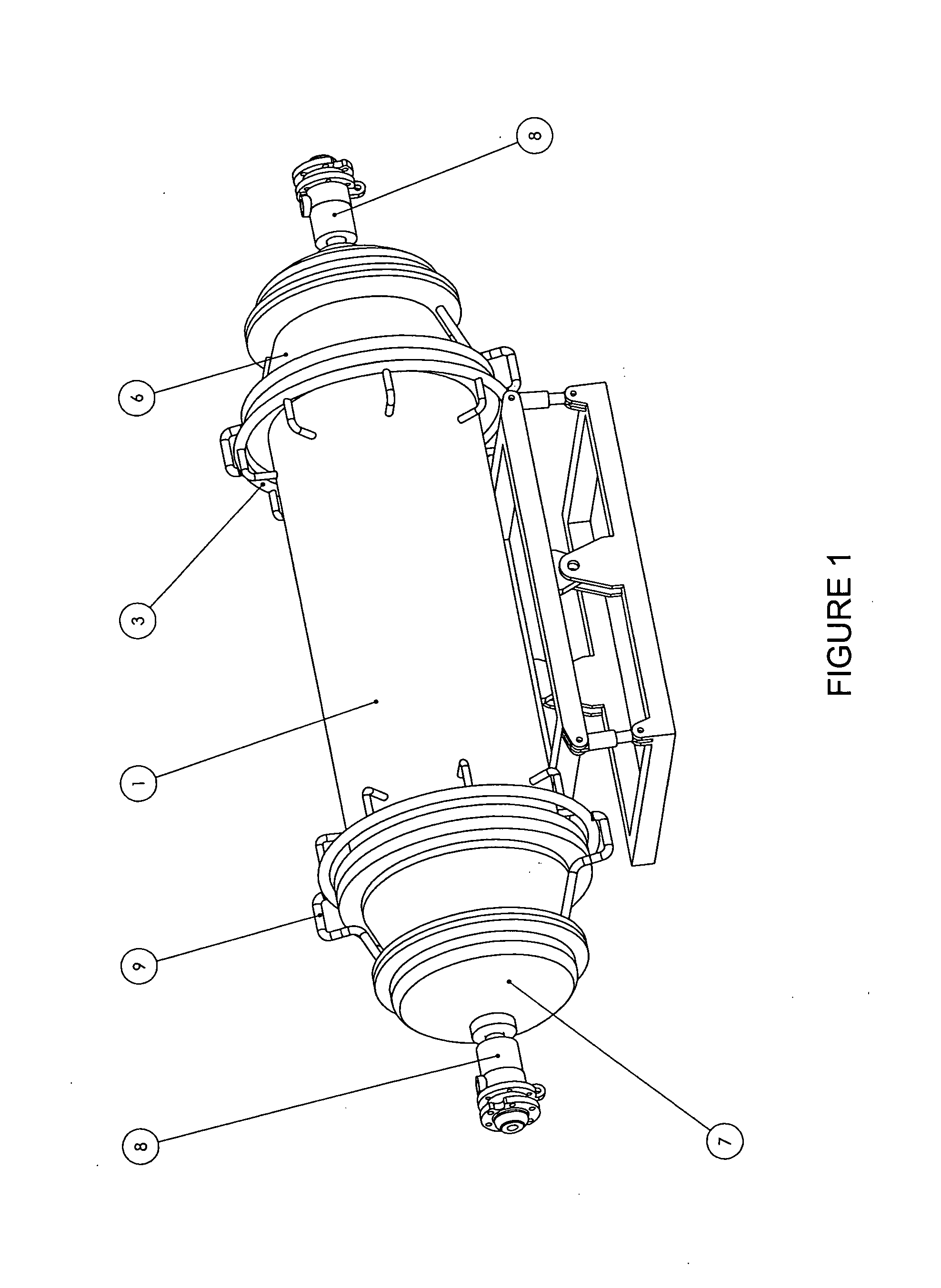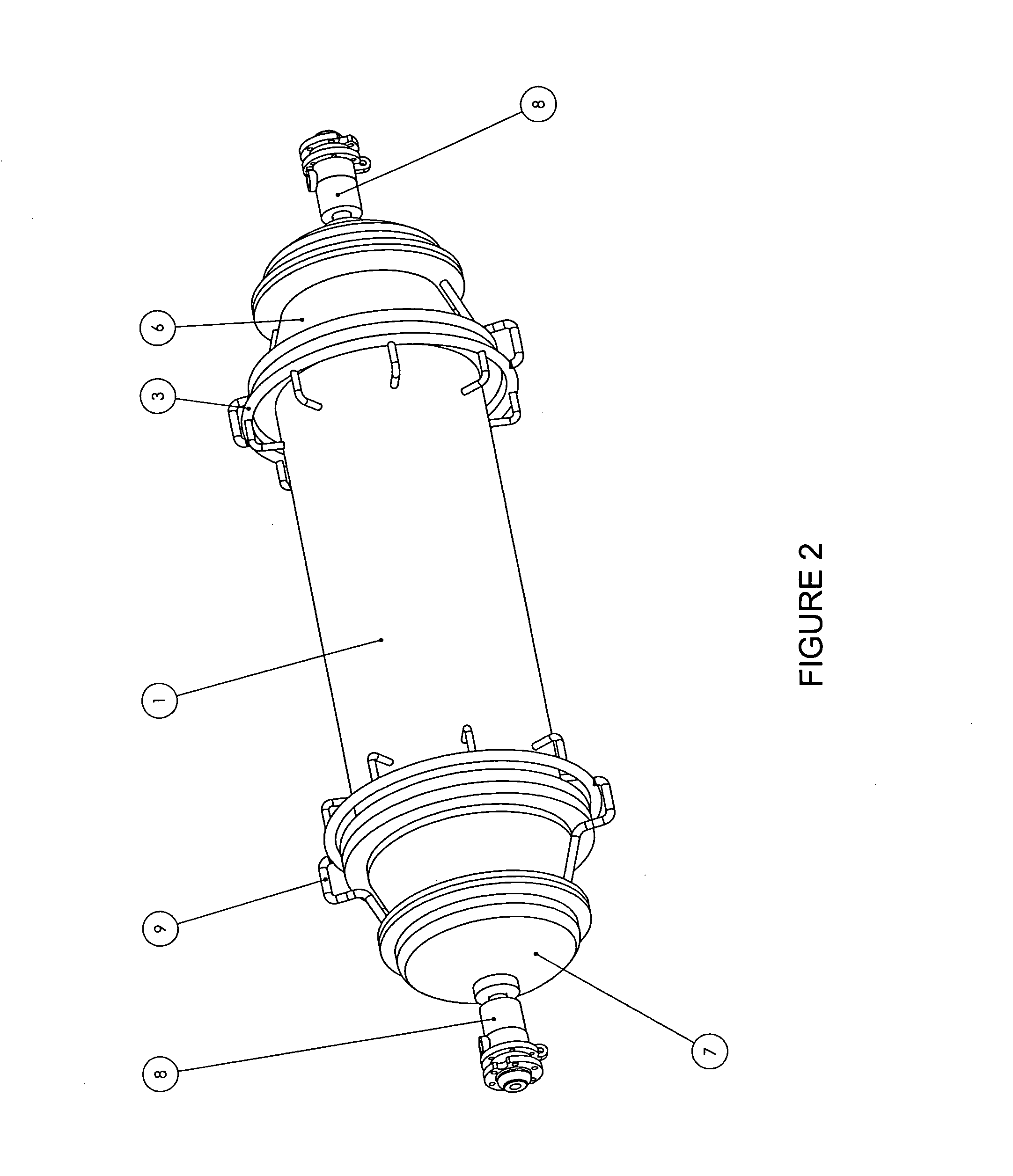Waste treatment autoclave to provide for steam - assisted drying
a technology of autoclave and steam, which is applied in the direction of transportation and packaging, disinfection, chemistry apparatus and processes, etc., can solve the problems of inability to provide efficient in situ drying, significant energy loss, and blockage of helical blades
- Summary
- Abstract
- Description
- Claims
- Application Information
AI Technical Summary
Benefits of technology
Problems solved by technology
Method used
Image
Examples
Embodiment Construction
[0078]In accordance with the foregoing summary, the following provides a detailed description of the preferred embodiment, which is presently considered to be the best mode thereof.
[0079]In one embodiment, steam may be introduced into, and water / steam may be exhausted through a common rotating union on each end of the autoclave. The end of the autoclave may be provided with one or more manifolds to distribute the steam and collect the spent waste steam to and from the tubes in the autoclave.
[0080]In the instance where autoclave operations require autoclave material to flow through the end of the autoclave, a manifolded door must be provided. The present invention provides one or more manifolded doors, to provide a sealed manifold against a system of tubes.
[0081]FIG. 1 is a perspective view of an autoclave apparatus for processing solid waste products, in accordance with one embodiment of the present invention. FIG. 1 provides a side perspective view of the autoclave 1, mounted on a ...
PUM
| Property | Measurement | Unit |
|---|---|---|
| pressure | aaaaa | aaaaa |
| pressure | aaaaa | aaaaa |
| temperatures | aaaaa | aaaaa |
Abstract
Description
Claims
Application Information
 Login to View More
Login to View More - R&D
- Intellectual Property
- Life Sciences
- Materials
- Tech Scout
- Unparalleled Data Quality
- Higher Quality Content
- 60% Fewer Hallucinations
Browse by: Latest US Patents, China's latest patents, Technical Efficacy Thesaurus, Application Domain, Technology Topic, Popular Technical Reports.
© 2025 PatSnap. All rights reserved.Legal|Privacy policy|Modern Slavery Act Transparency Statement|Sitemap|About US| Contact US: help@patsnap.com



